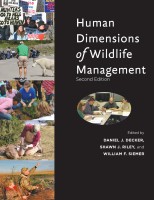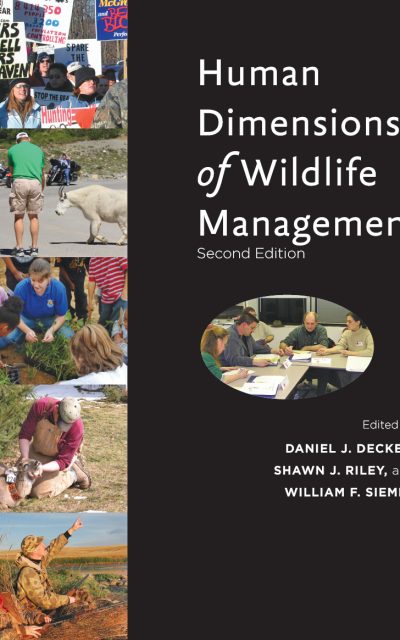 Editors: Daniel J. Decker, Shawn J. Riley and William F. Siemer
Editors: Daniel J. Decker, Shawn J. Riley and William F. Siemer
Publisher: Johns Hopkins University Press
Book Review by: Deekay Daulat
With certain types of thoughtful and planned effort, humans can help wildlife thrive to maintain ecological balance. Or with some harmful actions like uncontrolled hunting and even poaching, they can decimate certain species of wildlife. We humans – as the most intelligent and powerful species on earth – have a simple choice: protection and conservation of wildlife on the one hand versus their killing and exploitation on the other.
With this thesis – which I gather is the central one in this book – three experts in wildlife management, named above as editors, spell out how the relationships between humans and animals affect the outcome for each.
They discuss the consequences of how humans in general and certain groups in particular do, do not, should or should not govern our wildlife resources in order to benefit what they call ‘stakeholders’ – particular people who either benefit or are harmed by those relationships, actions or omissions, and in many cases, everyone in general.
They assert that there are two main components in wildlife management: governance and stakeholders. This well-researched study covers six aspects of the human dimensions of wildlife management, in as many parts detailed in the book:
- Overview and Fundamental Concepts
- Social Science Considerations
- The Management Process
- Human Dimensions Methods and Skills
- Human Dimensions Applications
- Professional Considerations for the Future
While this book has been written in particular to help students and practitioners in the human aspects of managing wildlife solve problems in their field, anyone concerned about the environment can benefit from the information and insight provided by the 27 experts – from various universities, research institutes and tourism data centers – who contributed material to this book.
For those of us who live in the suburbs, we sometimes see a deer in our backyard or even, unexpectedly, in front of the car we are driving in the daytime, or worse, at nights.
Or sometimes, when we are on a camping trip, a large bear suddenly appears, wanting us to share our breakfast, lunch or dinner with him. That’s no problem, but what if wants us as his food? How do we prevent such an encounter, or how do we deal with this situation after it occurs?
While we (stakeholders) may look for preventive measures in the above situations, it is these sorts of problems – such as managing the deer population in a residential area or preventing encounters between predators (such as bears or lions) and people, or pets – that wildlife managers study and are trained to solve.
But this book discusses ways on how to tackle much larger and more severe problems, such as the decimation of an entire species of wildlife. Tacking those broad issues successfully involves, the book’s authors point out, requires deeper study of causes and effects, getting trained in the scientific method, investigative work, and much more, simply because there are many factors that effect a given situation.
Towards that effort, this book provides detailed information on, among other matters, the following:
- Ethical considerations
- Managing citizen input
- Preparing questionnaires
- Systems thinking
- Using economics to inform decision making
- Working with social scientists
Daniel J. Decker is a professor in the Department of Natural Resources and director of the Human Dimensions Research Unit at Cornell University.
Shawn J. Riley is an associate professor in the Department of Fisheries and Wildlife at Michigan State University.
William F. Siemer is a research associate in the Human Dimensions Research Unit in the Department of Natural Resources at Cornell University.
We recognize, thank and praise the outstanding, unique and innovative work of the three editors named above – experts on wildlife – who planned this book, organized the contributors’ material, and presented it skillfully in this major research effort and enlightenment on the human dimensions of wildlife management.







